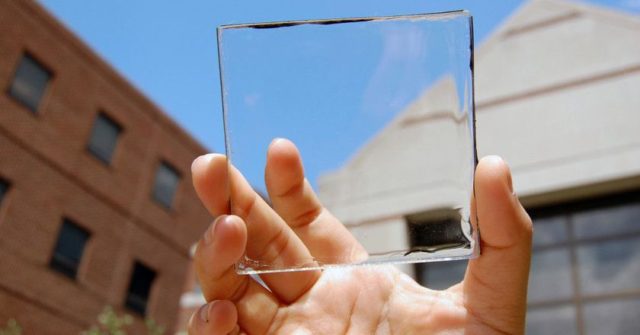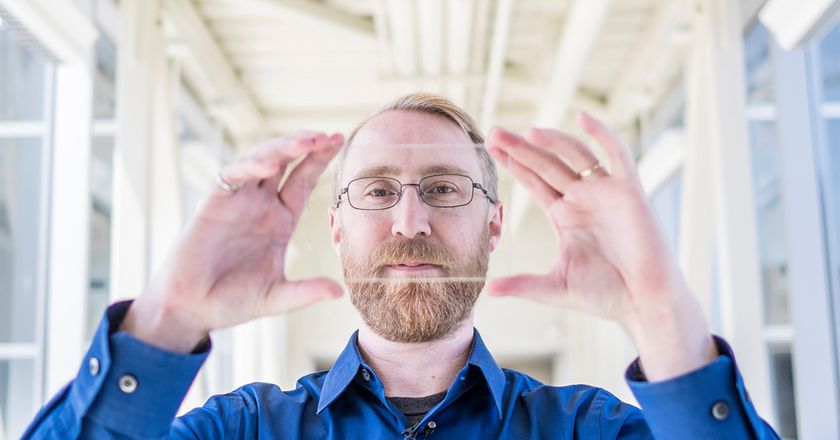Gaining our power from the sun to remove our reliance on fossil fuels is turning from a pipe dream into a reality as the technology continues to get better. Solar panels, though, still have a number of issues- they are large, expensive, aesthetically egregious and due to their stationary nature, they can only power homes and buildings.
Innovation to deal with these issues is coming from a variety of companies. Build Solar is producing solar power units encased inside glass blocks, which can be used like windows and integrate into a building’s facade; Audi is working on solar panels that integrate into the roof of a car; and Tesla is creating panels that look just like the shingles on a roof. Now, in the latest innovation, researchers at Michigan State University have had a breakthrough in solar technology. They have created completely transparent solar material, which could turn your windows—or even your smartphone—into energy-producing, emissions-cutting devices.
The glass-like solar material is made with proprietary molecules developed by the MSU researchers. The molecules absorb invisible wavelengths of light but still allow visible light to pass through. This generates power via near-infrared and ultraviolet wavelengths while providing an unsuspecting window or screen.
“Highly transparent solar cells represent the wave of the future for new solar applications,” lead researcher and associate professor at MSU Richard Lunt said in a press release. “We analyzed their potential and show that by harvesting only invisible light, these devices can provide a similar electricity-generation potential as rooftop solar while providing additional functionality to enhance the efficiency of buildings, automobiles, and mobile electronics.”
The researchers estimate there is as much as 7 billion square meters of glass surface in the United States alone. If they can take over even a fraction of that surface area, our fossil fuel consumption could take a massive hit.
Right now, solar overall only provides a little over 1 percent of US power, and if we’re ever going to truly kick fossil fuels to the curb, our use of solar technology, like the technology itself, needs to step up.
“That is what we are working towards,” Lunt says.
“Traditional solar applications have been actively researched for over five decades, yet we have only been working on these highly transparent solar cells for about five years. Ultimately, this technology offers a promising route to inexpensive, widespread solar adoption on small and large surfaces that were previously inaccessible.”
The glass blocks are similar in philosophy to the Tesla solar roof tiles, which look like regular roof tiles and integrate seamlessly into the facade of a home. But the Tesla tiles are pricier than the regular panels perched atop homes. Plus, unlike Tesla’s roof tiles, the Solar Squared blocks are built to power an entire high-rise.
The blocks are in the prototype stage now, and the Build Solar team is currently fine-tuning the design in order to test the technology at pilot sites, which it is currently seeking. They hope to take the blocks to market sometime in 2018.








